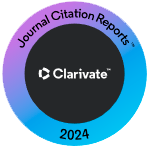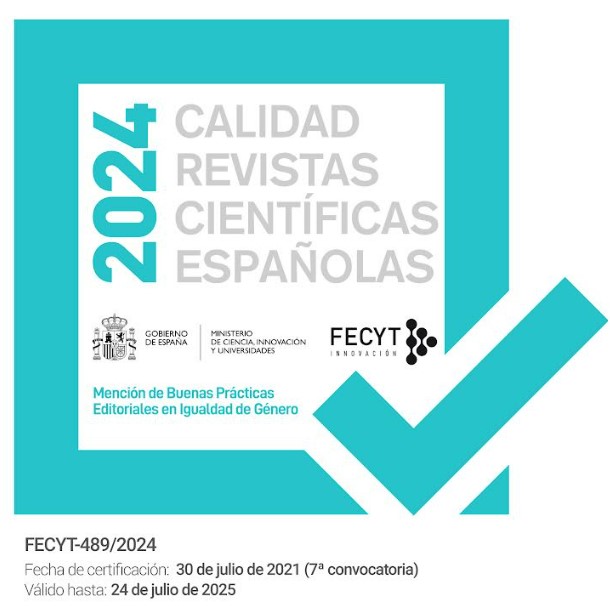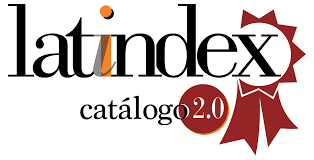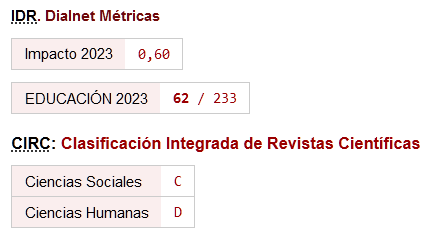Analysis of online engagement of students in emergency online learning
DOI:
https://doi.org/10.46661/ijeri.7746Keywords:
Covid-19, social needs, social interactions, cognitive engagement, behavioral engagement, emotional engagementAbstract
The spread of the COVID-19 virus has affected many organizations across the globe and has forced them to adapt and make use of a variety of emerging online communication technologies. However, because of the abrupt shift, the education sector has experienced challenges such as relative to students’ interaction and engagement with their peers and teachers. This study aimed to test the association among students’ (n=189) social needs, social interaction, and student engagement in emergency online learning platforms. Inferential statistics for this correlational study included Pearson correlation analysis, linear regression analysis, and analysis of variance. The results show a positive correlation among the variables, which means the engagement (cognitive, behavioral, and emotional) forms a set of indicators or predictors that can influence the student's social needs and social interaction in this emergency online learning platform. Thus, attaining engagement would create strong communication and meet the needs of the students, which will lead to good academic performance despite the challenges of emergency online learning.
Downloads
References
Abou-Khalil, V., Helou, S., Khalifé, E., Chen, M. A., Majumdar, R., & Ogata, H. (2021). Emergency Online Learning in Low-Resource Settings: Effective Student Engagement Strategies. Educ. Sci. 2021, 11, 24. https://doi.org/10.3390/educsci11010024
Adnan, M., & Anwar, K. (2020). Online Learning amid the COVID-19 Pandemic: Students' Perspectives. Online Submission, 2(1), 45-51. https://doi.org/10.33902/JPSP.2020261309
Akcaoglu, M., & Lee, E. (2016). Increasing social presence in online learning through small group discussions. International Review of Research in Open and Distributed Learning, 17(3), 1-17. https://doi.org/10.19173/irrodl.v17i3.2293
Ahshan, R. (2021). A framework of implementing strategies for active student engagement in remote/online teaching and learning during the COVID-19 pandemic. Education Sciences, 11(9), 483. https://doi.org/10.3390/educsci11090483
Ali, I., Narayan, A. K., & Sharma, U. (2020). Adapting to COVID-19 disruptions: student engagement in online learning of accounting. Accounting Research Journal, 34 (3), 261-269 https://doi.org/10.1108/ARJ-09-2020-0293
Alvarez Jr, A. V. (2020). The phenomenon of learning at a distance through emergency remote teaching amidst the pandemic crisis. Asian Journal of Distance Education, 15(1), 144-153.
Alawamleh, M., Al-Twait, L. M., & Al-Saht, G. R. (2020). The effect of online learning on communication between instructors and students during Covid-19 pandemic. Asian Education and Development Studies, 11 (2), 380-400. https://doi.org/10.1108/AEDS-06-2020-0131
Aristovnik, A., Keržič, D., Ravšelj, D., Tomaževič, N., & Umek, L. (2020). Impacts of the COVID-19 pandemic on life of higher education students: A global perspective. Sustainability, 12(20), 8438. https://doi.org/10.3390/su12208438
Asamoah, M. K. (2014). Re-examination of the limitations associated with correlational research. Journal of Educational Research and Reviews, 2(4), 45-52
Baber, H. (2021). Social interaction and effectiveness of the online learning–A moderating role of maintaining social distance during the pandemic COVID-19. Asian Education and Development Studies, 11(1), 159-171. https://doi.org/10.2139/ssrn.3746111
Bali, S., & Liu, M. C. (2018, November). Students’ perceptions toward online learning and face-to-face learning courses. Journal of Physics: Conference Series, 1108 (1), 012094. https://doi.org/10.1088/1742-6596/1108/1/012094
Baloran, E. T., Hernan, J. T., & Taoy, J. S. (2021). Course satisfaction and student engagement in online learning amid COVID-19 pandemic: A structural equation model. Turkish Online Journal of Distance Education, 22(4), 1–12. https://doi.org/10.17718/tojde.1002721
Barrot, J. S., Llenares, I. I., & del Rosario, L. S. (2021). Students’ online learning challenges during the pandemic and how they cope with them: The case of the Philippines. Education and Information Technologies, 26(6), 7321–7338. https://doi.org/10.1007/s10639-021-10589-x
Bevans, R. (2020). A step-by-step guide to linear regression in R. Scribbr. https://www.scribbr.com/statistics/linear-regression-in-r/
Bhat, A. (2020). Secondary research- Definition, methods, and examples. QuestionPro. https://www.questionpro.com/blog/secondary-research/
Brown, D. P. (2018). The Power of Human Connection. LI HERALD. Herald Community Newspapers, April 2018. https://www.liherald.com/stories/the-power-of-human-connection,102632
Chang, C., & Hsu, M. (2016). Understanding the determinants of users' subjective well-being in social networking sites: An integration of social capital theory and social presence theory. Behaviour & Information Technology, 35(9), 720–729. https://doi.org/10.1080/0144929X.2016.1141321
Cherry, K. (2019). The 5 levels of Maslow's hierarchy of needs. Very Well Mind.
Chiu, T. K. (2022). Applying the self-determination theory (SDT) to explain student engagement in online learning during the COVID-19 pandemic. Journal of Research on Technology in Education, 54(sup1), S14-S30. https://doi.org/10.1080/15391523.2021.1891998
Croxton, R. A. (2014). The role of interactivity in student satisfaction and persistence in online learning. Merlot Journal of Online Learning and Teaching, 10(2), 314–325.
DeWilde, J. (2020, May 15). 3 Ways to Address Social-Emotional Needs When Teaching Online - The Art of Education University. The Art of Education University. https://theartofeducation.edu/2020/05/15/3-ways-to-address-social-emotional-needs-through-online-learning/
Dwivedi, A., Dwivedi, P., Bobek, S., & Zabukovšek, S. S. (2019). Factors affecting students’ engagement with online content in blended learning. Kybernetes. https://doi.org/10.1108/K-10-2018-0559
El-Sayad, G., Md Saad, N. H., & Thurasamy, R. (2021). How higher education students in Egypt perceived online learning engagement and satisfaction during the COVID-19 pandemic. Journal of Computers in Education, 8(4), 527-550. https://doi.org/10.1007/s40692-021-00191-y
Guo K, Zhang X, Bai S, Minhat HS, Nazan AINM, Feng J, et al. (2021) Assessing social support impact on depression, anxiety, and stress among undergraduate students in Shaanxi province during the COVID-19 pandemic of China. PLoS ONE 16(7), e0253891. https://doi.org/10.1371/journal.pone.0253891
Hall, J. A., & Davis, D. C. (2017). Proposing the communicate bond belong theory: Evolutionary intersections with episodic interpersonal communication. Communication Theory, 27(1), 21-47. https://doi.org/10.1111/comt.12106
He, H., Zheng, Q., Di, D., & Dong, B. (2019). How learner support services affect student engagement in online learning environments. IEEE Access, 7, 49961–49973. https://doi.org/10.1109/ACCESS.2019.2910589
Hews, R., McNamara, J., & Nay, Z. (2022). Prioritising lifeload over learning load: Understanding postpandemic student engagement. Journal of University Teaching & Learning Practice, 19(2), 128-146. https://doi.org/10.53761/1.19.2.9
James, R. M., Okon, I. E., & Idaka, C. I. (2021). Academic Staff Empowerment and Quality Assurance in Colleges of Education in Cross River State, Nigeria. International Journal of Educational Administration, Planning and Research (IJEAPR), 13(1), 102-109.
Kenton, W., & Scott, G. (2021). Strength, Weakness, Opportunity, and Threat (SWOT) Analysis. https://www. investopedia. com/terms/s/swot. Asp
Khlaif, Z. N., Salha, S., & Kouraichi, B. (2021). Emergency remote learning during COVID-19 crisis: Students’ engagement. Education and Information Technologies, 26(6), 7033–7055. https://doi.org/10.1007/s10639-021-10566-4
Kurniawati, N., & Fauziyah, F. (2022). Fostering students’engagement in synchronous learning using interactive web-based media. Indonesian EFL Journal, 8(1), 13-22.
Lagat, K. T. (2020). Education amidst COVID-19 disruption: Perceived difficulty in implementing flexible learning strategies of teacher education faculty members in a state university. Philippine Social Science Journal, 3(3), 142-150. https://doi.org/10.52006/main.v3i3.264
Le HT., & Truong C. (2021). Tertiary Students’ Perspectives on Online Learning During Emergency Remote Teaching in the Context of Covid-19: A Case Study. https://doi.org/10.2991/assehr.k.210226.025
Librero, (2021). Online Student Engagement and Sense of Community in a Philippine Online University. IJODeL, 7 (1), 13-30.
Lim, L. T. S., Regencia, Z. J. G., Dela Cruz, J. R. C., Ho, F. D. V., Rodolfo, M. S., Ly-Uson, J., & Baja, E. S. (2022). Assessing the effect of the COVID-19 pandemic, shift to online learning, and social media use on the mental health of college students in the Philippines: A mixed-method study protocol. Plos one, 17(5), e0267555. https://doi.org/10.1371/journal.pone.0267555
Liu, J., & Zhang, P. (2020). How to Initiate a Discussion Thread?: Exploring Factors Influencing Engagement Level of Online Deliberation. In: Sundqvist A., Berget G., Nolin J., Skjerdingstad K. (eds) Sustainable Digital Communities. iConference 2020. Lecture Notes in Computer Science, vol 12051. Springer, Cham. https://doi.org/10.1007/978-3-030-43687-2_17
Mai, Y., Wu, Y. J., & Huang, Y. (2021). What Type of Social Support Is Important for Student Resilience During COVID-19? A Latent Profile Analysis. Frontiers in psychology, 12, 646145. https://doi.org/10.3389/fpsyg.2021.646145
Mandernach, B. J., Donnelli-Sallee, E., & Dailey-Hebert, A. (2011). Assessing course student engagement. In R. Miller, E. Amsel, B. M. Kowalewski, B.B. Beins, K. D. Keith, & B. F. Peden (Eds.), Promoting Student Engagement: Techniques and Opportunities (pp. 277-281). Society for the Teaching of Psychology, Division 2, American Psychological Association.
Maslow, A. H. (1958). A Dynamic Theory of Human Motivation. Howard Allen Publishers. https://doi.org/10.1037/11305-004
Martin, F., Wang, C., & Sadaf, A. (2018). Student perception of helpfulness of facilitation strategies that enhance instructor presence, connectedness, engagement and learning in online courses. The Internet and Higher Education, 37, 52–65. https://doi.org/10.1016/j.iheduc.2018.01.003
Martin, F., & Bolliger, D. U. (2018). Engagement matters: Student perceptions on the importance of engagement strategies in the online learning environment. Online Learning, 22(1), 205-222. https://doi.org/10.24059/olj.v22i1.1092
McCombes, S. (2019). Descriptive research. https://www.scribbr.com/methodology/descriptive-research/
Mcleod, S. (2018). Maslow’s Hierarchy of Needs. In Simply Psychology (pp. 1–16). Simply Psychology. https://canadacollege.edu/dreamers/docs/Maslows-Hierarchy-of-Needs.pdf
Molinillo, S., Aguilar-Illescas, R., Anaya-Sánchez, R., & Vallespín-Arán, M. (2018). Exploring the impacts of interactions, social presence and emotional engagement on active collaborative learning in a social web-based environment. Computers & Education, 123, 41–52. https://doi.org/10.1016/j.compedu.2018.04.012
Moreira, P. A., Faria, V., Cunha, D., Inman, R. A., & Rocha, M. (2020). Applying the transtheoretical model to adolescent academic performance using a person-centered approach: A latent cluster analysis. Learning and Individual Differences, 78, 101818. https://doi.org/10.1016/j.lindif.2019.101818
Motz, B., Jankowski, H., Snapp-Childs, W., & Quick, J. (2022). Going Remote: Actionable Insights from Indiana University’s Transition to Remote Instruction due to COVID-19. Iu.edu. https://doi.org/https://hdl.handle.net/2022/25835
Nadeem, M., & Blumenstein, M. (2021). Embedding Online Activities during Lecture Time: Roll Call or Enhancement of Student Participation? Journal of University Teaching and Learning Practice, 18(8), 11. https://doi.org/10.53761/1.18.8.11
Nair, A. J. M., & Sreekumar, S. (2021). Social Interaction Anxiety and Its Influence on Learning Engagement of Students During COVID-19. The International Journal of Indian Psychology, 9 (2), 1237-1243 https://doi.org/10.25215/0902.130
Nguyen, T.D., Cannata, M., Miller, J. (2018). Understanding student behavioral engagement: Importance of student interaction with peers and teachers. The Journal of Educational Research, 111(2),163-174. https://doi.org/10.1080/00220671.2016.1220359
Nortvig, A.-M., Petersen, A. K., & Balle, S. H. (2018). A Literature Review of the Factors Influencing E-Learning and Blended Learning in Relation to Learning Outcome, Student Satisfaction and Engagement. Electronic Journal of E-Learning, 16(1), 46–55. https://eric.ed.gov/?id=EJ1175336
Paca, R. M., & Valdez, A. V. (2018). Proposed Institutional Development Plan (IDP) of Mindanao State University (MSU) Main Campus: Guide towards Academic Excellence. International Journal of Humanities and Social Sciences, 10(3), 1-12.
Peterson, J. L. (2016). Formative Evaluations in Online Classes. Journal of Educators Online, 13(1), 1-24. https://doi.org/10.9743/JEO.2016.1.8
Pilotti et, at. (2017). Factors Related to Cognitive, Emotional, and Behavioral Engagement in the Online Asynchronous Classroom. International Journal of Teaching and Learning in Higher Education, 29(1), 145-153.
Quiamco, M. S., Abocado, S. M., & Toquero, C. M. (2022). Zoom Engagement of Pre-service Teachers during Emergency Remote Classes. Asian Journal of Distance Education, 17(2). http://www.asianjde.com/ojs/index.php/AsianJDE/article/view/656
Reeve, J., & Tseng, C.-M. (2011). Agency as a fourth aspect of students’ engagement during learning activities. Contemporary Educational Psychology, 36(4), 257-267. https://doi.org/10.1016/j.cedpsych.2011.05.002
Rhodes, B, & Burgess, A. (2018). An Innovative Educational Intervention to Improve Nursing Students' Knowledge, Attitudes, and Skills Surrounding Breastfeeding.Teaching and Learning in Nursing, 13 (4), 197-201. https://doi.org/10.1016/j.teln.2018.05.003
Rizvi, Y. S., & Nabi, A. (2021). Transformation of learning from real to virtual: an exploratory-descriptive analysis of issues and challenges. Journal of Research in Innovative Teaching & Learning, 14 (1), 5-17. https://doi.org/10.1108/JRIT-10-2020-0052
Sung, E., & Mayer, R. E. (2012). Five facets of social presence in online distance education. Computers in human behavior, 28(5), 1738-1747. https://doi.org/10.1016/j.chb.2012.04.014
Talidong, K. J. B., & Toquero, C. M. D. (2021). Facing COVID-19 through emergency online education anchored in Khan’s framework: Case of Philippine teachers in Xi’an, China. European Journal of Interactive Multimedia and Education, 2(1), e02104. https://doi.org/10.30935/ejimed/9683
Toquero, C. M. (2021). Academic Silver Linings in a Philippine State University Amid the Early Stages of Pandemic Cases. Journal of Learning for Development, 8(2), 448–455. https://doi.org/10.56059/jl4d.v8i2.498
Tee, M. L., Tee, C. A., Anlacan, J. P., Aligam, K. J. G., Reyes, P. W. C., Kuruchittham, V., & Ho, R. C. (2020). Psychological impact of COVID-19 pandemic in the Philippines. Journal of affective disorders, 277, 379-391. https://doi.org/10.1016/j.jad.2020.08.043
Toth, M. D., & Sousa, D. A. (2019). The Power of Student Teams: Achieving, Social, Emotional and Cognitive Learning in Every Classroom Through Academic Teaming. Learning Sciences International.
UNESCO, G. (2020). Education: From disruption to recovery. UNESCO Building peace in the minds of men and women. https://en.unesco.org/70years/building_peace
UNESCO (2020). COVID-19 Education Response. https://en.unesco.org/covid19/ educationresponse/globalcoalition
Wester, E. R., Walsh, L. L., Arango-Caro, S., & Callis-Duehl, K. L. (2021). Student engagement declines in STEM undergraduates during COVID-19–driven remote learning. Journal of microbiology & biology education, 22(1), ev22i1-2385. https://doi.org/10.1128/jmbe.v22i1.2385
Wilms, (2000). Student Engagement at School A Sense of Belonging and Participation, Results from PISA 2000. Organisation for Economic Co- operation and Development 2003.
Wong, A., & Chong, S. (2018). Modelling adult learners’ online engagement behaviour: proxy measures and its application. Journal of Computers in Education, 5(4), 463-479. https://doi.org/10.1007/s40692-018-0123-z
Zheng, F., Khan, N. A., & Hussain, S. (2020). The COVID 19 pandemic and digital higher education: Exploring the impact of proactive personality on social capital through internet self-efficacy and online interaction quality. Children and Youth Services Review, 119, 105694. https://doi.org/10.1016/j.childyouth.2020.105694
Zhong, R. (2020). The coronavirus exposes education’s digital divide. The New York Times, 18.
Published
How to Cite
Issue
Section
License
Copyright (c) 2023 Dea Mae Ciudad, Majed Mañgulamas, Sairah Mañgulamas, Cathy Mae Toquero

This work is licensed under a Creative Commons Attribution-NonCommercial-NoDerivatives 4.0 International License.












